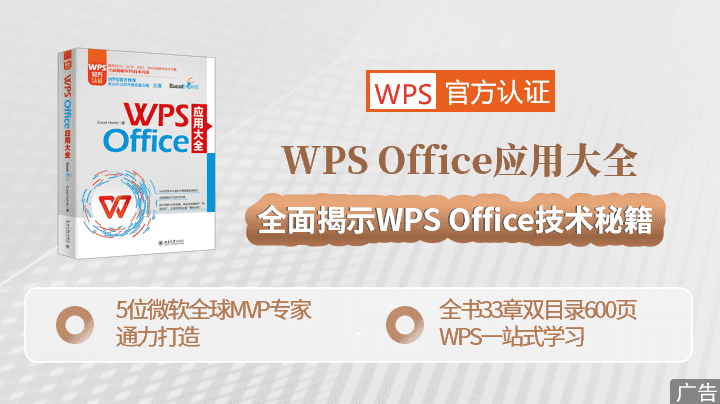译者:hxhgxy 来源:http://blogs.msdn.com/excel
发表于:2006年7月7日
Some Words About Charting
有关图表的一些释疑
Over the past few months, when I have posted information about charting in Office 2007, there has been plenty of feedback and discussion about the work presented. Today, I wanted to spend a bit of time addressing some of that feedback.
在过去的几个月里,当我发表有关Office 2007图表的信息时,总是有非常多对现有工作的反馈和讨论。今天,我想花些时间来解答其中的一些反馈。
When I read over the feedback, especially the feedback that resulted from the survey post last week, it seems to fall into three categories:
1. Why did you not add (insert your most important chart feature here) in Office 2007?
2. There is too much of an emphasis on “eye candy” in the features that you did add to Charting in Office 2007.
3. The styles that you have shown us are not “professional”.
当我看这些反馈,特别是从上周发表的调查中来的反馈时,它们可以归为三类:
1. 你为什么不在Office 2007里面添加(在这里插入你最重要的图表功能)?
2. 在你添加到Office 2007图表的功能中,对“eye candy”(译者:可以理解为吸眼球的东西,或者是养眼的东西。Candy原意为糖果。)强调太多了。
3. 你给我们演示的样式并不“专业”。
Here are a few thoughts on each of those items that will, hopefully, at least help everyone understand how we ended up where we are.
对于每条反馈,这是我们的一些想法,希望,至少能够帮助每个人理解我们如何停止在我们现在的程度。
Why did you not add (insert your most important chart feature here) in Office 2007?
你为什么不在Office 2007里面添加(在这里插入你最重要的图表功能)?
We are very aware that there is customer demand for new features in charting – new chart types, better integration with Word & PowerPoint, more control over the layout of charts, more capabilities within charts, better visuals (e.g. anti aliasing, color schemes), better PivotCharts/a more “interactive” experience, conditional formatting, support for bigger data sets, and so on. Over time, our goal is to deliver a great many of those features while maintaining decent backwards compatibility with the hundreds of millions of charts that our customers have created over the last 20 years. That said, the work required to deliver all those features and maintain backwards compatibility is much bigger than would ever fit in any single release of Office, so we need to sequence the work over a period of time.
我们很明白用户对图表新功能的需求——新的图表类型,与Word和PowerPoint更好的结合,对图表层次的更多控制,图表更强大的能力,更好的视觉效果(例如,防止混淆,颜色方案),更好的数据透视图表/更多的“相互作用”,条件格式,支持更大的数据,等等。随着时间的过去,我们的目标是保留对我们用户在过去20年来创造的无数中图表的恰当向后兼容性的同时,也实施这些大量的新功能。这意味着,要实施这些功能并且保持向后兼容性的东西,会比Office中任何合适的单一版本大得多,因此,我们需要一段时间在一步一步实施该工作。
So how will sequencing work? This release, we made a number of architectural changes so that we would have a solid foundation on which to build the next several releases of charting features. Specifically, we significantly updated the charting engine and hooked into a cross-Office “rendering” platform (that’s fancy talk for “code that draws the shapes and text that makes up charts”). This is the work that allowed us to make charts native objects in Word and PowerPoint, just like they are in Excel. This is also the work that gave us better looking drawing of charts (anti aliasing, better text, and the other visual effects). Because all the other features we hope to add to charts will be built on top of this foundation, we needed to get the foundation completed before we could start adding other features. Along the way this release, we also redesigned the UI to accommodate the new ribbon and dialog architecture, which was part of a broad cross-Office initiative.
那么,如何部署该工作?在该版本里,我们做了大量的结构上的改变,这样一来,我们就有了坚实的基础,可以在下几个版本中创建新的图表功能。特别是,我们对图表引擎做了重大的改变,并且将其与Office之间的“表演”平台挂上钩了(这就是那个有趣的话题“编写代码来绘制图形或文本来装扮图表”)。这东西允许我们将图表变成Word或PowerPoint里本身的控件,就像它们在Excel里一样。这东西也给我们提供更好的图表外观(防止混淆,更好的文本,以及其它的视觉效果)。因为我们希望添加到图表的所有这些功能会在该基础上构建,所以,我们在能够开始添加其它功能之前,需要完成该基础。连同该版本,我们也重新设计了UI,以适应新的彩带和对话框结构,它们是涵盖整个Office之间的新东西。
The key point here is that we are aware there is a broad set of features customers want us to add to Office, and we hope to add them over time. At some future point, I hope to figure out a way to solicit the opinions of the thousands of people that read this blog on which charting features we should focus on next.
这里所说的关键是,我们明白用户希望我们添加大量的功能,而我们希望一步一步添加。对于一些进一步的东西,我希望找到一个方法来征求阅读本博克的成千上万的观众的意见,我们下一步应该关注哪些图表功能。
There is too much of an emphasis on “eye candy” in the features that you did add to Charting in Office 2007.
在你添加到Office 2007图表的功能中,对“eye candy”强调太多了。
This is related to the discussion above. Charts in Office 2007 are built using a shared Office drawing layer. We used this shared drawing layer so that charts could be native objects in any application, which is a long-standing customer request, and also because the shared drawing layer allowed us to draw very good-looking charts (meaning things like anti-aliased lines), which is another long-standing customer request. Because the shared layer is used for more than just charts – it is also used for drawing objects, Word Art, effects in PowerPoint, etc. – the layer has plenty of modern visual capabilities which the chart engine then inherits for free, essentially. Because these capabilities exist, we have exposed them to some extent in the chart UI. While we understand not everyone is interested in effects like gradients and shadows, that is not universally true – for example, customers often request modern graphic effects in charts in PowerPoint.
这个与上面的讨论相关。Office 2007里的图表是使用共享的Office绘图层创建的。我们使用该共享的绘图层,以至于图表在任何应用软件中都可以成为其本土控件,这是用户长期以来的请求;同时,也因为共享的绘图层让我们可以绘制非常好看的图表(有意思的东西,如防止混淆的线),这是用户的另一个长期以来的请求。因为该共享绘图层不仅用图表上——也用在绘图对象,艺术字,PowerPoint效果,等等——所以该绘图层具有大量的现代视觉功能,图表引擎可以从本质上免费继承它。因为这些功能已经存在,我们只是将其扩展到图表UI里面。然而,我们理解并不是每个人都对梯度效果和阴影效果感兴趣,这不是普遍真实的——例如,用户经常要求在PowerPoint图表里使用时髦的图形效果。
The key point here is that the “eye candy” available in charts is part of the platform that we built charts upon, so it is not like we had to “trade off” other charting features to implement these effects – they are simply part of the platform. Additionally, while some of these visual effects may not be something in great demand in Excel, they are something that has appeal in other Office applications. Finally, we have been careful to try and provide a balance between styles that apply these effects and simple, straightforward styles that do not … and in most cases, the defaults are the simple, straightforward styles.
这里所表达的关键是,图表中可用的“eye candy”是我们在创建图表的平台上的一部分,因此,并不是好像我们要“卖掉”其它的图表功能来实现这些效果——它们只是该平台的一部分而已。另外,也许某些这种视觉效果在Excel里并不是非常的需要,它们是其它Office应用软件要求的东西。最后,我们仔细尝试了并且提供了在应用这些效果和简单直接的、不应用这些效果之间的平衡。
The styles that you have shown us are not “professional” (or how you can help us make Office 2007 charts better)
你给我们演示的样式并不“专业”(或者说,你如何帮助我们使Office 2007图表更好)
Chart styles are part of a larger initiative across Office 2007. We have many customers who spend significant time trying to create good-looking documents. Our intent with Office 2007 is to make it easier to create good-looking documents. This means providing a way to create charts, tables, diagrams, shapes, and other document components with a consistent look and feel. Each document has a theme which defines a coordinated set of styles for each document component. For charts, we have tried to create a wide breadth of styles to cover the broad variety of business needs in Excel, PowerPoint, and Word. We have tried to optimize these styles for charts; e.g. emphasizing the data, while balancing a consistent look with the other document components such as tables and diagrams. For example, axes, tick marks, and gridlines have been subdued to allow the data in the plot area to stand out more.
在Office 2007里,图表样式是较大的新东西之一。我们有很多用户,花费相当多的时间试图创建一些好看的文档。我们Office 2007的意图是使创建好看文档更任意些。这意味着提供一个方法来创建带有一致外公和感觉的图表,表格,图示,图形和其它文档组件。对于图表,我们尝试了创建很宽的样式幅度,以满足Excel,PowerPoint和Word中的各种业务需求。我们尝试了优化这些图表样式,举例来说,强调数据,同时协调和其它文档组件如表格和图示一致的外观。例如,轴,标识和网格线都被柔和了,以使绘图区的数据更加突出。
OK, so that is our intent. We certainly heard some feedback last week (in blog comments and the survey which many of you did fill out thanks very much) that the styles you saw were not what you would consider “professional”, or that there were things you would like to see changed. (To be fair, neither the survey nor the images in this blog have presented a holistic view of all the styles available – for some reason, I think we tended to show the fancier more effects-laden styles, so our mistake.) That is great feedback, and we would like to understand more.
好啦,这是我们的想法。我们上周确实听到一些反馈(在Blog意见里,以及你们中很多人填写的调查里。非常感谢!),你们不认为你们所看到的这些样式是“专业的”,或者说,你们希望看到很多东西应该改变。(公平地说,不管是调查还是本博克里呈现的所以可用样式的整体视图——为了某些原因,我想我们试图显示了更多效果绚丽的样式,这是我们的失误。)这是非常好反馈,我们原意了解更多。
To that end, I would like to invite the folks that posted comments last week as well as other blog readers to provide us some examples of what you think a “professional” chart looks like. While this could take a number of forms, given that a picture can be worth a thousand words, one thing that would be great is to see XL files that contain sample “professional” charts – this could be either something from the current versions of Excel or from the Excel 2007 beta. Those of you with the beta, we would also be happy to hear specific changes you would like to see to the chart styles in the beta build. You can send all files and comments to xlfiles@microsoft.com. We will take what we get in the next week or so and try and factor the feedback into the final set of styles.
Thanks in advance to all that take the time to help us out.
最后,我想邀请上周发表建议的朋友,以及其它博克上的读者,给我们提供一些你认为“专业”图表长什么样的例子。这可能会需要一些形体,因为一个图形会比一千句话更有效果,更好的是看到含有一些“专业”图表的Excel文件——既可以是从当前Excel版本来的东西,也可以是从Excel 2007 beta版的东西。那些使用beta版的朋友,我们也很高兴听到你希望图表样式的具体更改。你可以发送所有文件和建议到xlfiles@microsoft.com。我们将大概在下周采取我们得到的所有反馈,并且试图反映该反馈到最终样式上。
Published Friday, June 02, 2006 3:13 PM by David Gainer
Filed Under: Charting
注:本文翻译自http://blogs.msdn.com/excel ,原文作者为David Gainer(a Microsoft employee),Excel Home 授权转载。严禁任何人以任何形式转载,违者必究。

 ExcelHome
ExcelHome







